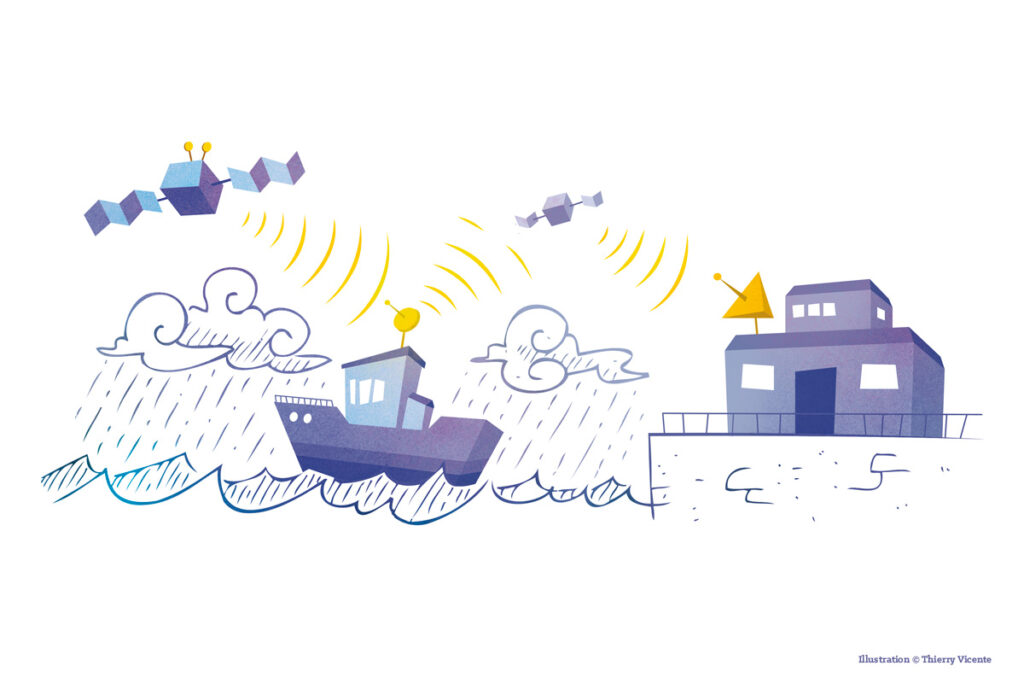[LUM#16] Before the Flood
For want of being able to anticipate them, almost every year the Cevennes episodes that hit the Mediterranean arc cause heavy human and material damage. An ambitious system involving a nanosatellite, a ferry and a few well-meaning heads could change all that by 2023.

October 15, 2018: torrential downpours hit the Aude region overnight. The toll was heavy: 13 dead(France Bleu Occitanie). Back in 2015, 20 people lost their lives in Mandelieu-la-Napoule, including a dozen trapped in their cars by the sudden surge of water(France Bleu Azur). How can we explain the sudden onset of such violent storms? A conflict between the warm, humid air masses of the sea and the cold air at altitude from the Cévennes, hence their name: episodes cévenols.
"By detecting these hot air masses as soon as they form at sea, and with a very fast data transmission chain, we could better anticipate these episodes and better protect populations," explains Laurent Dusseau*. And to accomplish this mission, the Director of the Montpellier University Space Center(CSUM) already has his herald! Robusta 3A Méditerranée, a 30 cm high nanosatellite, entirely designed by the CSUM with the help of over 150 students, apprentices and trainees since 2013, and with the support of the Van Allen Foundation, a partnership foundation of the University of Montpellier.
Mobile sensors
Detecting moist air masses is nothing new. Météo-France, a partner in the project, already has sensors that use the signals emitted by our phones' satellite navigation systems (GNSS). " The presence of water in the atmosphere modifies these signals, making it possible to calculate the amount of vapor at a given location," explains Laurent Dusseau. There are over 800 humidity sensors on French soil. On the ground, but not at sea, where the air masses responsible for Cevennes episodes are formed.
To collect this data offshore, the researchers will take one of these sensors on board a ferry sailing the Mediterranean from Sète. A simple idea for a major technological challenge taken up by the École nationale supérieure de techniques avancées(ENSTA Bretagne) and the Institut national de l'information géographique et forestière(IGN), both involved in the adventure. The fact that the sensor is mobile implies many more variables, such as wave or boat movements," explains Laurent Dusseau. A thesis is currently being written at ENSTA on this subject.
Data freshness
Second technological challenge: the speed and freshness of the data. "For the information captured by Robusta to be valid we'll have to demonstrate that we can process it and send it back to end users in an hour, hour and a half maximum." The end users? Météo-France, of course, but also the Hérault departmental fire and rescue service (Sdis 34), which joined the project last autumn.
For its part, Robusta 3A continues to prepare for the big flight : "The prototype has passed the Critical Design Review, meaning that the entire satellite design has been validated. We are now in the testing phase". Scheduled for the end of 2022, the nanosatellite's launch will mark the start of a journey that will see it fly over the Mediterranean twice a day for a year. What's next? " We'll see how Robusta 3A performs, and if it does, we'll continue the experiment," concludes Laurent Dusseau.
UM podcasts are now available on your favorite platforms (Spotify, Deezer, Apple podcasts, Amazon Music...).
*IES (UM -CNRS)